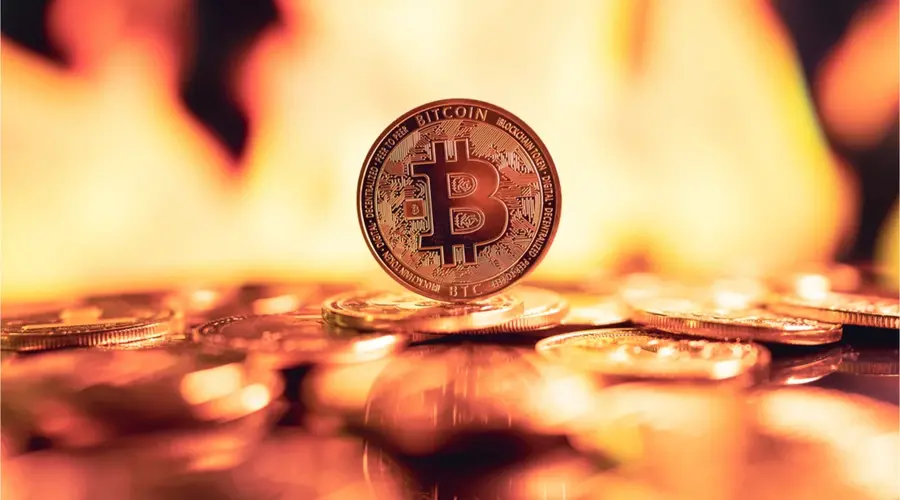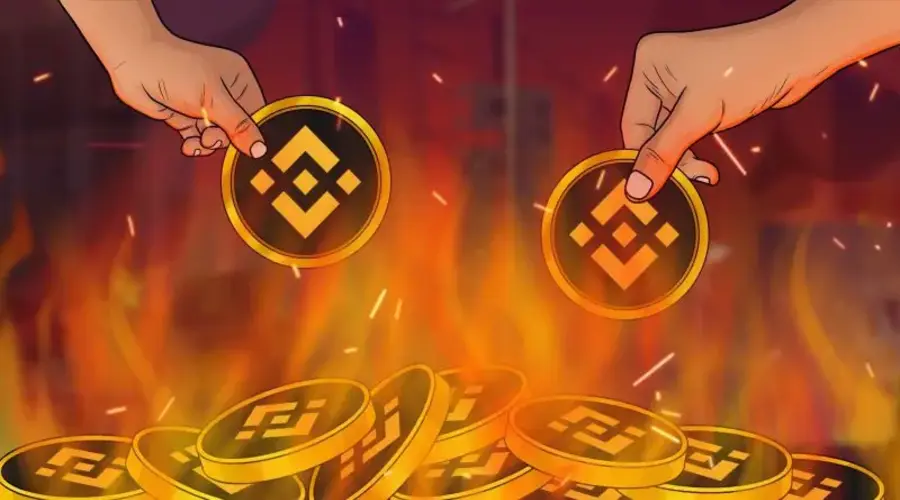The Legal and Regulatory Considerations of Coin Burning

The Legal and Regulatory Considerations of Coin Burning
Cryptocurrencies have revolutionized the financial landscape, providing innovative ways to transfer and store value. One notable practice within the crypto space is coin burning, which involves permanently removing a portion of a cryptocurrency’s token supply from circulation. While coin burning can have several benefits for token projects, it also raises various legal and regulatory considerations that need to be carefully evaluated. In this article, we will explore the legal and regulatory aspects of coin burning, examining its implications on compliance, investor relations, market manipulation, and more.
Introduction
Definition of coin burning
Coin burning refers to the deliberate and permanent removal of a certain number of cryptocurrency tokens from circulation. This process typically involves sending the tokens to a provably unspendable address or an inaccessible wallet, ensuring that they can never be used again. By reducing the total supply of tokens, coin burning aims to create scarcity and potentially increase the value of the remaining tokens.
Purpose of coin burning
Token projects employ coin burning for various reasons. It can be used to control token supply, manage inflation, reward token holders, or align the token’s value with the underlying project’s success. Additionally, coin burning can enhance the token’s scarcity, which may attract investors seeking assets with limited availability. However, before implementing coin burning, token projects must navigate the legal and regulatory landscape to ensure compliance and mitigate potential risks.
Legal Considerations
Regulations and laws related to coin burning
The legality of coin burning varies across jurisdictions. Some countries have explicit regulations concerning cryptocurrencies, while others have yet to establish clear guidelines. Token projects must carefully analyze the legal framework of the jurisdictions in which they operate to determine if coin burning aligns with existing laws. Engaging legal counsel with expertise in cryptocurrency regulations can provide valuable insights and help navigate potential legal pitfalls.
Compliance with securities regulations
Depending on the nature of the tokens involved, coin burning may fall under securities regulations. In certain cases, the act of burning tokens could be seen as a repurchase or destruction of securities, triggering obligations such as disclosure requirements or restrictions on trading activities. Token projects must assess whether their tokens are classified as securities and comply with the applicable regulations to avoid potential legal consequences.
Tax implications of coin burning
Coin burning may have tax implications for both token projects and token holders. The tax treatment of burned tokens can vary depending on the jurisdiction. Token projects should consult with tax experts to understand the tax obligations associated with coin burning and ensure compliance with tax laws. Similarly, token holders who receive tokens through coin burning should be aware of any tax liabilities that may arise from their token holdings.
Regulatory Considerations
Regulatory frameworks for cryptocurrencies
Governments and regulatory bodies worldwide are working to establish comprehensive frameworks for cryptocurrencies. These frameworks aim to address concerns such as consumer protection, anti-money laundering (AML), and the prevention of illicit activities. Token projects engaging in coin burning must stay informed about the evolving regulatory landscape to ensure compliance and avoid potential penalties or reputational damage.
Governmental oversight and involvement
Some governments have taken an active role in the cryptocurrency industry, recognizing its potential but also aiming to mitigate risks. Regulatory agencies may impose requirements for token projects, such as licensing, reporting obligations, or capital reserve requirements. Token projects should actively engage with regulators and comply with any applicable requirements to operate within the legal framework.
Consumer protection and investor safeguards
Coin burning can impact token holders, and regulators are increasingly focusing on ensuring consumer protection and investor safeguards within the crypto space. Token projects need to be transparent in their communications, provide clear information about coin burning initiatives, and protect the interests of their token holders. By fostering trust and implementing robust governance mechanisms, token projects can enhance investor confidence and mitigate potential legal and reputational risks.

Coin Burning and Tokenomics
Coin burning as a mechanism for controlling token supply
One of the primary reasons for implementing coin burning is to control the token supply. By reducing the number of tokens in circulation, token projects can potentially increase the value of each remaining token. This mechanism is particularly relevant for projects with a fixed supply of tokens or those aiming to combat inflation.
Effects of coin burning on token value and scarcity
Coin burning has the potential to influence the value and scarcity of tokens. When the supply of tokens decreases due to burning, the remaining tokens become relatively scarcer, which can create a perception of increased value. However, the impact on token value also depends on other factors such as market demand, project fundamentals, and external market conditions.
Economic implications of coin burning
Coin burning can have economic implications for both token projects and token holders. For token projects, successful coin burning initiatives may attract new investors, increase market liquidity, and strengthen the project’s ecosystem. Token holders, on the other hand, may benefit from potential price appreciation resulting from reduced token supply. However, it’s essential to consider the broader economic factors and potential risks associated with coin burning.
Coin Burning and Environmental Impact
Energy consumption and carbon footprint of coin burning
Coin burning, especially in proof-of-work (PoW) based blockchain networks, requires significant energy consumption. The energy-intensive nature of PoW consensus mechanisms has raised concerns about the environmental impact of coin burning. Token projects should be aware of these concerns and explore sustainable alternatives or migrate to more energy-efficient consensus mechanisms like proof-of-stake (PoS).
Sustainable alternatives and considerations
To mitigate the environmental impact of coin burning, token projects can explore sustainable alternatives. These may include implementing carbon offset initiatives, supporting renewable energy projects, or contributing to environmental conservation efforts. By adopting sustainable practices, token projects can align their operations with broader environmental goals and potentially enhance their reputation among environmentally conscious investors.
Coin Burning and Token Projects
Benefits and risks for token projects
Coin burning can offer several benefits for token projects. It can create a sense of scarcity, potentially attracting investors seeking assets with limited availability. Additionally, successful coin burning initiatives can increase the value of the remaining tokens, benefitting both the project and its token holders. However, token projects must carefully assess the risks associated with coin burning, such as regulatory compliance, investor sentiment, and potential legal challenges.
Factors to consider before implementing coin burning
Before implementing coin burning, token projects should consider various factors. These may include the project’s tokenomics, market conditions, legal and regulatory considerations, and the preferences of the token community. Conducting thorough analysis and engaging in open dialogue with stakeholders can help token projects make informed decisions and mitigate potential risks.
Examples of successful coin burning initiatives
Several token projects have successfully implemented coin burning initiatives. For example, Binance Coin (BNB) regularly burns a portion of its token supply, which has contributed to its growing value over time. Similarly, projects like TRON and EOS have also employed coin burning to manage token supply and enhance token scarcity. By studying these examples, token projects can gain insights and inspiration for their coin burning strategies.
Coin Burning and Investor Relations
Transparency and communication with token holders
Transparent communication with token holders is crucial when implementing coin burning initiatives. Token projects should provide regular updates on the rationale behind coin burning, the number of tokens burned, and the impact on token supply. Open dialogue and clear communication can help maintain trust and foster positive investor relations.
Impact of coin burning on investor sentiment
Coin burning can have a significant impact on investor sentiment. Positive coin burning initiatives that effectively manage token supply and enhance token value can attract new investors and bolster confidence in the project. However, poorly executed or opaque coin burning strategies may lead to skepticism or even distrust among existing and potential investors. Token projects must be mindful of this and proactively address any concerns or questions raised the community.
Potential legal and reputational risks
Implementing coin burning without considering the legal and regulatory aspects can expose token projects to legal and reputational risks. Violating securities regulations or engaging in fraudulent practices can result in penalties, lawsuits, and damage to the project’s reputation. Token projects should consult legal experts, maintain compliance with relevant laws, and adopt robust governance frameworks to mitigate these risks effectively.
Coin Burning and Market Manipulation
Preventing fraudulent coin burning practices
While coin burning can be a legitimate mechanism, it’s crucial to guard against fraudulent practices. Token projects must establish clear guidelines and mechanisms to prevent unauthorized or malicious coin burning activities. Implementing transparent processes, conducting regular audits, and ensuring independent oversight can help safeguard against market manipulation and fraudulent coin burning.
Regulatory measures against market manipulation
Regulators are increasingly vigilant about market manipulation in the cryptocurrency space. Token projects engaging in coin burning should be aware of regulatory measures implemented to detect and deter market manipulation practices. By adhering to the relevant regulations and cooperating with regulatory authorities, token projects can contribute to the overall integrity and trustworthiness of the crypto market.
Ensuring fair and transparent markets
Fair and transparent markets are essential for the long-term sustainability of the cryptocurrency industry. Token projects must prioritize integrity, honesty, and transparency in their operations, including coin burning initiatives. By providing accurate information, combating market manipulation, and fostering trust, token projects can contribute to the development of a healthy and vibrant crypto market.
Future Trends and Challenges
- Evolving regulatory landscape
The legal and regulatory landscape surrounding cryptocurrencies is continuously evolving. Governments and regulatory bodies are actively working to establish frameworks that strike a balance between innovation and investor protection. Token projects need to stay informed about these developments and proactively adapt their strategies to comply with changing regulations.
- Regulations and Laws Related to Coin Burning
The legality of coin burning varies across jurisdictions. Some countries have explicit regulations concerning cryptocurrencies, while others have yet to establish clear guidelines. Token projects must carefully analyze the legal framework of the jurisdictions in which they operate to determine if coin burning aligns with existing laws. Engaging legal counsel with expertise in cryptocurrency regulations can provide valuable insights and help navigate potential legal pitfalls.
- Compliance with Securities Regulations
Depending on the nature of the tokens involved, coin burning may fall under securities regulations. In certain cases, the act of burning tokens could be seen as a repurchase or destruction of securities, triggering obligations such as disclosure requirements or restrictions on trading activities. Token projects must assess whether their tokens are classified as securities and comply with the applicable regulations to avoid potential legal consequences.
- Tax Implications of Coin Burning
Coin burning may have tax implications for both token projects and token holders. The tax treatment of burned tokens can vary depending on the jurisdiction. Token projects should consult with tax experts to understand the tax obligations associated with coin burning and ensure compliance with tax laws. Similarly, token holders who receive tokens through coin burning should be aware of any tax liabilities that may arise from their token holdings.
Conclusion
In conclusion, coin burning is a practice that token projects use to control token supply, enhance scarcity, and potentially increase the value of remaining tokens. However, it is essential to consider the legal and regulatory implications associated with coin burning. Compliance with securities regulations, understanding tax obligations, and staying informed about the evolving regulatory landscape are crucial for token projects. Additionally, transparent communication with investors, mitigating market manipulation risks, and considering the environmental impact of coin burning are vital aspects to be addressed.
FAQs
Q1: Is coin burning legal? A1: The legality of coin burning varies across jurisdictions. Token projects must analyze the legal framework of the jurisdictions in which they operate and consult with legal experts to ensure compliance.
Q2: What are the tax implications of coin burning? A2: Tax implications of coin burning can vary depending on the jurisdiction. Token projects and token holders should consult with tax experts to understand and comply with applicable tax laws.
Q3: How does coin burning affect investors? A3: Coin burning can impact investors potentially increasing the value of the remaining tokens. However, investors should assess the overall project fundamentals and market conditions when evaluating the impact of coin burning.
Q4: Are there regulations in place to prevent market manipulation through coin burning? A4: Regulatory bodies are increasingly vigilant about market manipulation in the cryptocurrency space. Token projects should adhere to relevant regulations and engage in transparent practices to prevent market manipulation risks.
Q5: What are the environmental considerations of coin burning? A5: Coin burning, particularly in energy-intensive proof-of-work (PoW) blockchain networks, can have a significant environmental impact. Token projects should explore sustainable alternatives and consider migrating to more energy-efficient consensus mechanisms like proof-of-stake (PoS).
I’ve been involved with cryptocurrency for three years. I have been a vocal advocate for the people and an active part of the community. I am well-known for my book “Crypto Revolution: An Insider’s Guide to the Future of Money” and blog “The Crypto Chronicles.” In addition, I frequently contribute to CoinDesk, one of the top news websites for cryptocurrencies. I write as well as invest actively in a number of bitcoin initiatives.
